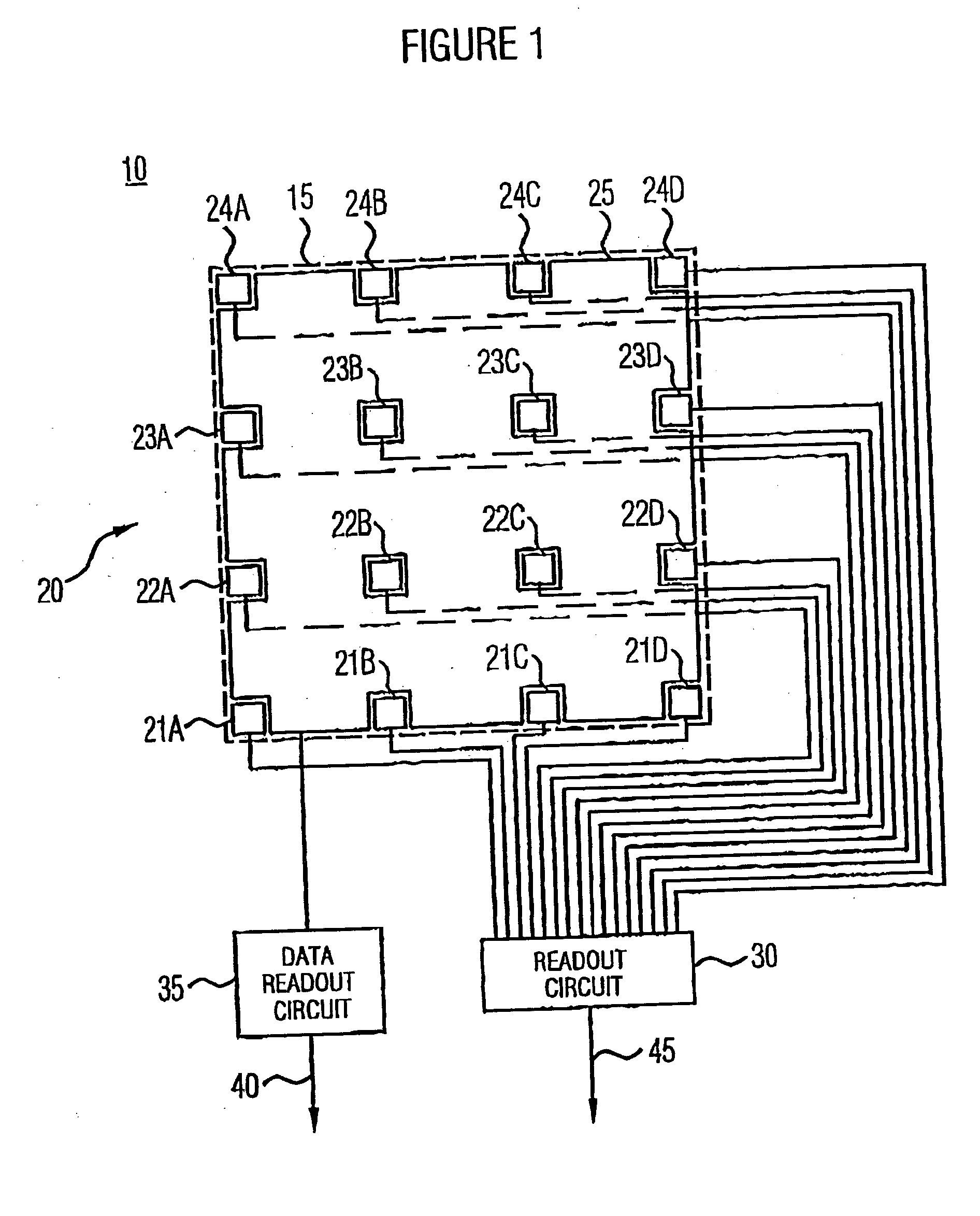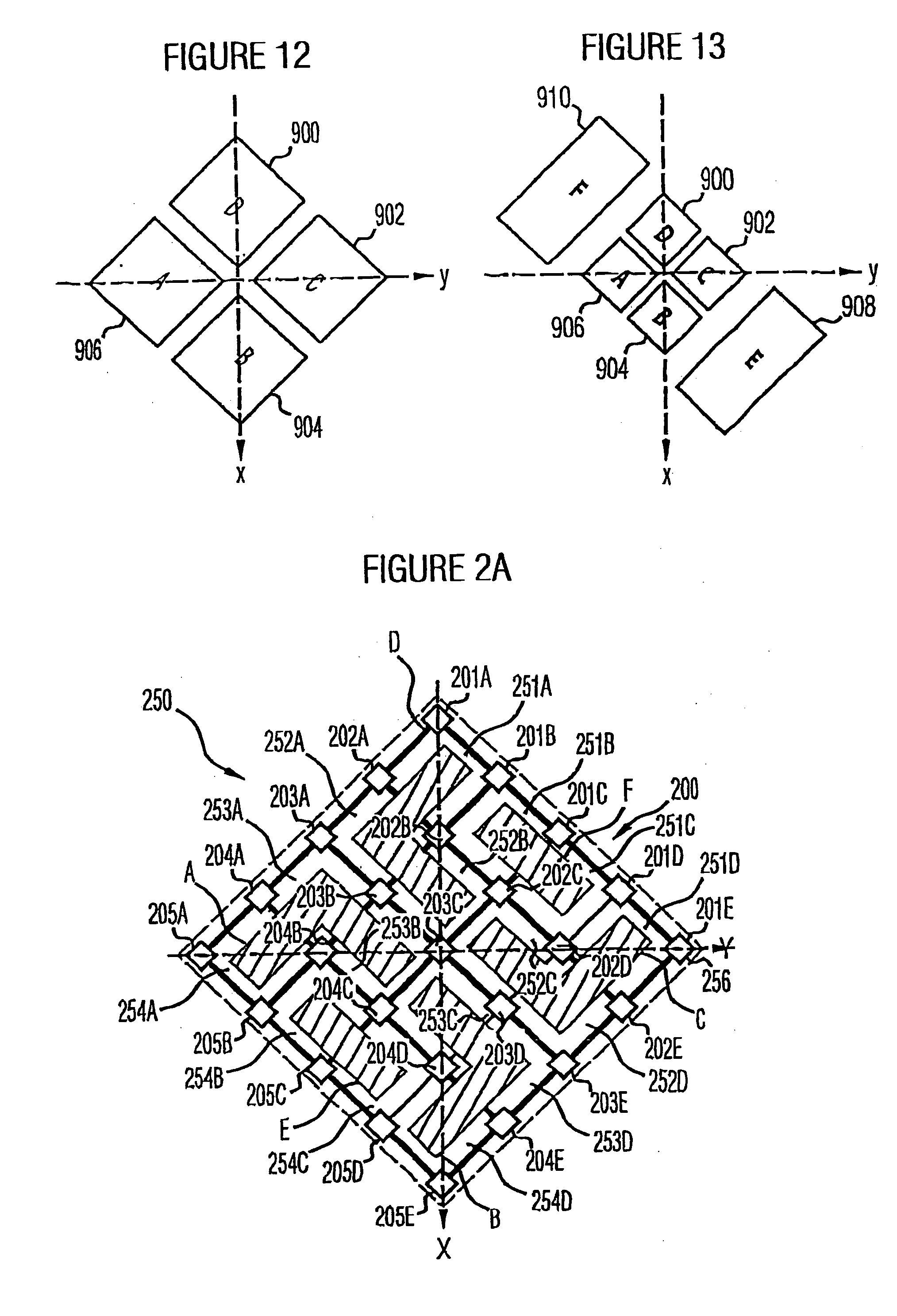Optical detection device
a detection device and optical technology, applied in the field of optical detection means, can solve the problems of time-consuming and expensive, inaccurate data retrieval, time-consuming and costly precautions, etc., and achieve the effect of reducing the error rate of data retrieval, accurate, and accurate adjustmen
- Summary
- Abstract
- Description
- Claims
- Application Information
AI Technical Summary
Benefits of technology
Problems solved by technology
Method used
Image
Examples
Embodiment Construction
[0066]FIG. 1 initially shows an optical detection device in accordance with an embodiment of the present invention, generally indicated by 10. In a detection window 15 provided for detecting a light beam transmitting data, the optical detection device 10 includes a 4×4 array 20 of detection diodes 21a, 21b, 21c, 21d, 22a, 22b, 22c, 22d, 23a, 23b, 23c, 23d, 24a, 24b, 24c, 24d, the second figure, respectively, indicating a line number, and the letter indicating a column number. In addition, the optical detection device 10 includes a detection diode 25 occupying, or covering, in terms of surface area, that part of the detection window 15 which is not occupied by the diode array 20. The detection diodes 21a-24d are connected to a readout circuit 30, whereas the detection diode 25 is connected to a data readout circuit 35. The readout speeds of the readout circuits 30 and 35 differ. The data readout circuit 35 has a readout speed which is sufficiently high to be able to scan the data, wh...
PUM
 Login to View More
Login to View More Abstract
Description
Claims
Application Information
 Login to View More
Login to View More - R&D
- Intellectual Property
- Life Sciences
- Materials
- Tech Scout
- Unparalleled Data Quality
- Higher Quality Content
- 60% Fewer Hallucinations
Browse by: Latest US Patents, China's latest patents, Technical Efficacy Thesaurus, Application Domain, Technology Topic, Popular Technical Reports.
© 2025 PatSnap. All rights reserved.Legal|Privacy policy|Modern Slavery Act Transparency Statement|Sitemap|About US| Contact US: help@patsnap.com



